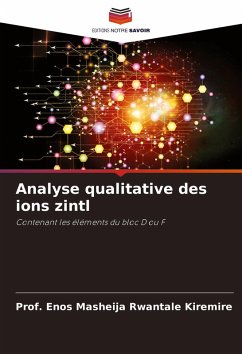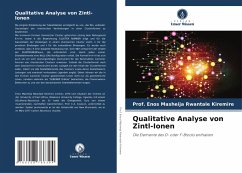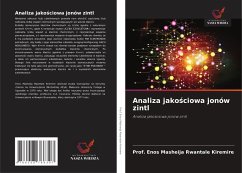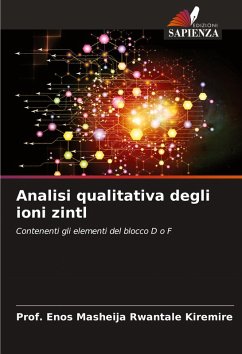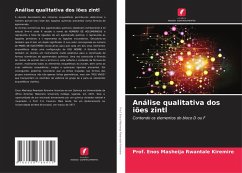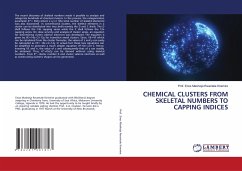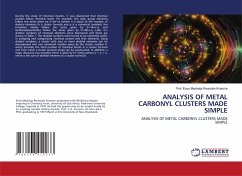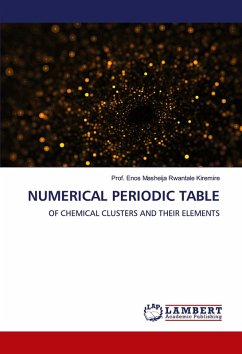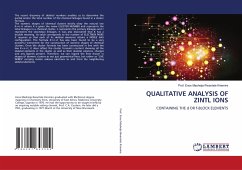
QUALITATIVE ANALYSIS OF ZINTL IONS
CONTAINING THE d OR f-BLOCK ELEMENTS
Versandkostenfrei!
Versandfertig in 6-10 Tagen
60,99 €
inkl. MwSt.

PAYBACK Punkte
30 °P sammeln!
The recent discovery of skeletal numbers enables us to determine the partial and/or the total number of the chemical linkages found in a cluster formula.The isomeric shapes of chemical clusters strictly obey the natural law K=n+t where K is given the name CLUSTER NUMBER and represents the total linkages in a chemical cluster, n represents the primary linkages and t represents the secondary linkages. It was also discovered that K has a double meaning. Its value corresponds to the number of ELECTRON PAIRS it requires so that each of its skeletal elements attains a NOBLE GAS configuration. The fo...
The recent discovery of skeletal numbers enables us to determine the partial and/or the total number of the chemical linkages found in a cluster formula.The isomeric shapes of chemical clusters strictly obey the natural law K=n+t where K is given the name CLUSTER NUMBER and represents the total linkages in a chemical cluster, n represents the primary linkages and t represents the secondary linkages. It was also discovered that K has a double meaning. Its value corresponds to the number of ELECTRON PAIRS it requires so that each of its skeletal elements attains a NOBLE GAS configuration. The formula K=n+t has also been found to be a very powerful instrument for the construction of isomeric shapes of chemical clusters. Once the cluster formula has been constructed in line with the law K=n+t, it does reflect the cluster formula's content showing all the skeletal elements in the cluster as well as their skeletal valances, charges and any ligands present. Therefore, we can regard the lines drawn in shapes of isomeric clusters as not just geometrical lines, but rather as "LIVE WIRES'' carrying cluster valence electrons to and from the neighboring skeletal elements.





